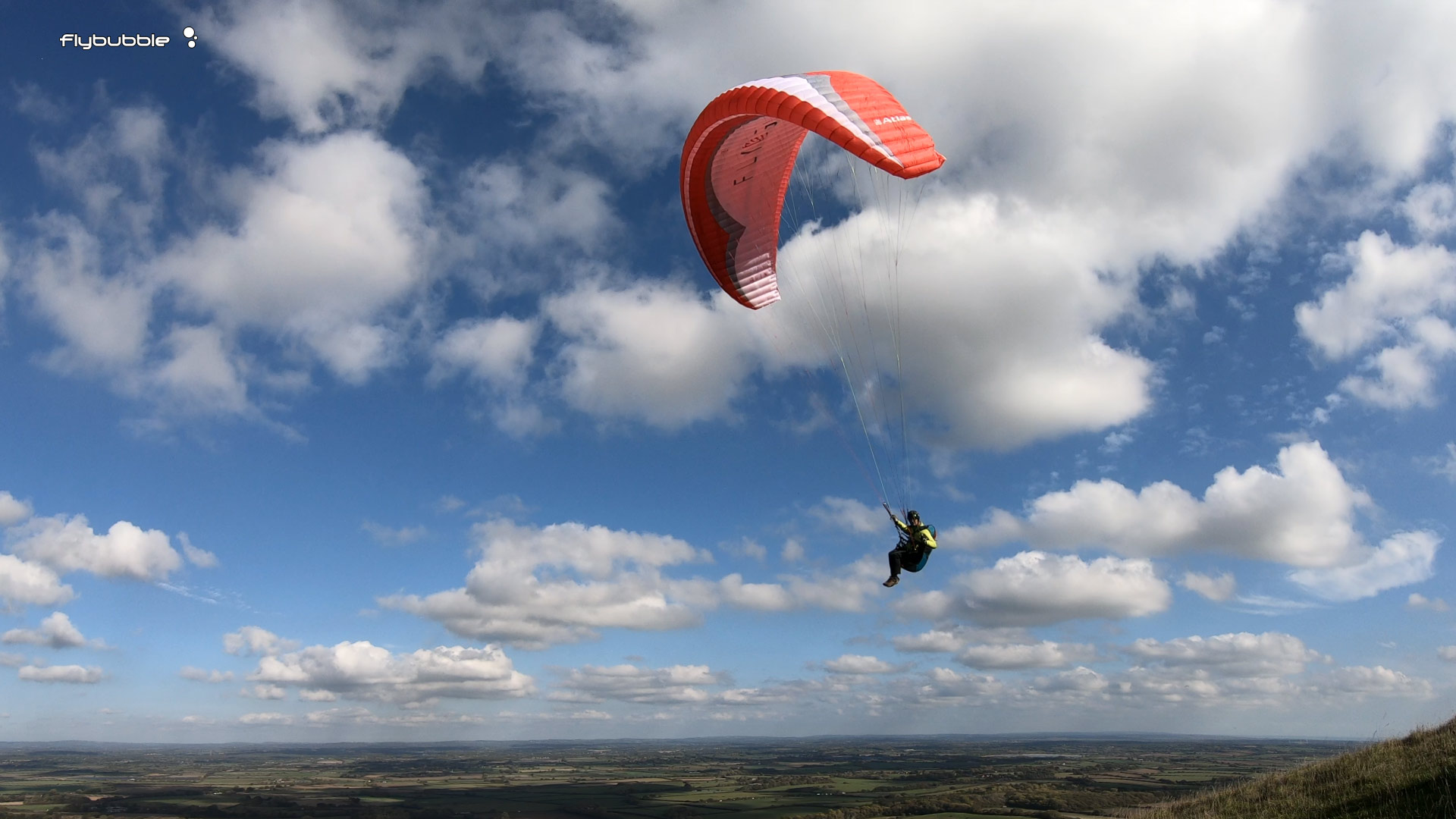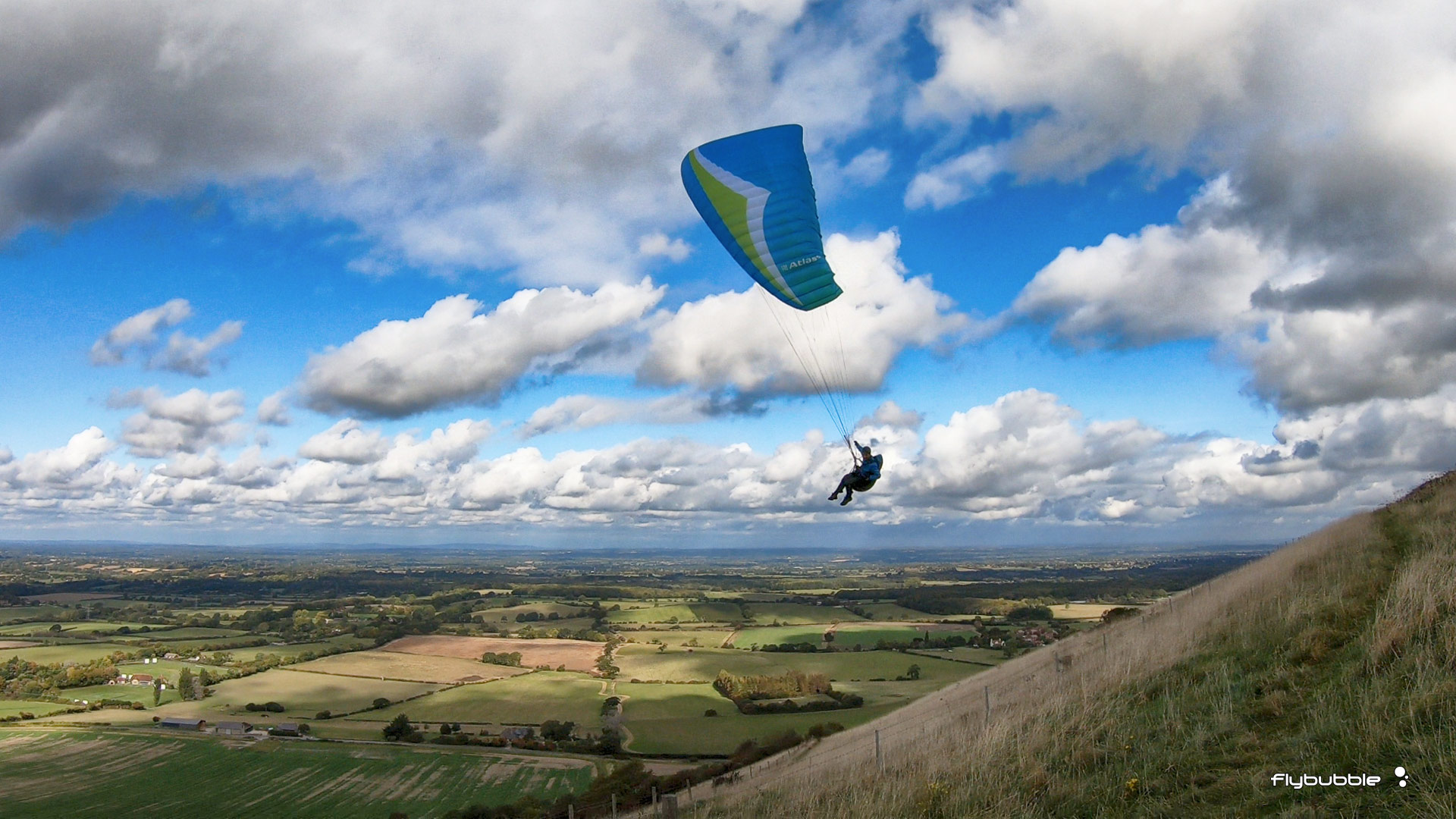
The original Gin ATLAS was released in 2013, and has been a hugely successful Progression wing offering ‘easy B’ handling and good performance. It still holds its own against newer wings.
Gin was clearly in no hurry to replace the Atlas. The Atlas 2 is a refined version, not a completely new development. The team started with the original and used new technology and learning to improve the following aspects: line flutter, canopy and fabric movements in turbulence, handling, safety and launch behaviour.
Gin Atlas 2: construction

It gives the overall impression of a quality product, manufactured by a highly-experienced team. The risers and maillons are slimmer than the original Atlas, the lines are slightly thinner, and the Ronstan speedbar pulleys look higher specification. The fabric is lighter grade which helps to reduce the wing weight by 500g (for the S size) to 5.1kg, which is about average for a modern low B.
Most of what you can see on the wing is unchanged from the Atlas 1: line placement, line layout, cell openings, leading edge reinforcing rods, aspect ratio, cell count. Line lengths are within millimetres of the original. The construction differences are subtle. Take over 10m of wing spanned by flexible fabric with hundreds of seams and you’ll start to appreciate that the way you gather, shape, reinforce and join each panel can affect its nature. Or does it?
Gin Atlas 2: on the ground

As we have both the Atlas (original) size M and Atlas 2 size M I was able to test them back to back. I could detect differences between the two. The Atlas 2 feels like a refined Atlas.
The Atlas 1 wants to 'auto-launch'; it is difficult to hold down with just the brakes when the wind is strong. Even using the rear risers is very physical. The Atlas 2 feels similar in this regard, but perhaps just a little easier to manage. The launch phase is also simpler, very predictable and steady with little acceleration. It's easier to keep overhead, and the sail is more solid and cohesive.
Gin Atlas 2: In the air

Both Nancy (who flew the S) and I (who flew the S and M) found that, although the Atlas and Atlas 2 are clearly 'related' wings, they are not the same wing. The Atlas 2 has lower pilot demands than the original, particularly ground handling and on launch (especially in stronger winds) but also in active air.
The Atlas 2 seems to move around less in all axis (especially pitch) and require less pilot input to keep it overhead in active air and so it offers improved safety.
The brake travel required for steering seems marginally shorter than the Atlas 1 and produces a slightly more responsive turn with the ability to turn a little tighter into a ‘sweet spot’ which is great for thermaling.
Gin Atlas 2: Performance

We were not able to confirm relative performance versus the original, however just based on the improved behaviour and noticeably ‘tighter’ sail I would expect it is slightly better. In this class, your focus should not be on infinitesimal performance advantages, rather look at handling and safety which will have exponential gains in ‘total pilot performance’.
Relative to other wings in the class, it seemed to offer a high trim speed, which we find useful for getting around the sky and staying out of trouble. Accelerated, the Atlas 2 is very stable and confidence-building, with less pitch movement and a consistently cleaner leading edge than the Atlas 1. The minimal line layout produces less drag than many other wings in this class.
Climbing in weak lift does not seem to be its forte; it’s adequate but not outstanding. Keeping you safe in rowdy air, coring strong lift and gliding will reveal the unique strengths of the Atlas 2: agile handling fused with outstanding stability and a taut collapse-resistant attitude.
Gin Atlas 2: Certification

The Atlas 2 is certified as EN-B in all sizes. The test flight dates reveal they were not required to redo the flight tests of all sizes, because the wing is within the tolerance range of the original Atlas certification dated 2013. There are certification tolerances for any design to allow for manufacturing variations and minor trim changes. In this situation the safety rating of a modified model with lighter fabric can be confirmed by doing an indicative test on one size (M) to check for conformity. As this produced better results than the original (usually the case with lighter wings), the wing was approved (as ‘not significantly changed’ ... but only in terms of the parameters the testing house can measure, mainly, line lengths). Using this shortcut can lead to confusion on the forums because it’s easily misunderstood but it’s a common way to certify a wing for most manufacturers when it comes to light wings and wings with similar design. A single size undergoes flight tests to check conformity. In the case of the Atlas 2, the new XXS was tested as well (the hardest size to get through EN B) and passed. We are confident that the wing is safer than the original Atlas and fits at the very low end of the EN-B category in terms of pilot demands.
It highlights a curious truth about paraglider design – you can take an almost identical wing (on paper) and modify the tensioning, fabric and create cleaner surfaces and produce a wing with a noticeably different character. The cohesiveness in the wing affects the handling and safety.
Gin Atlas 2: who is it for?

Gin say they have optimised the 3D shaping and sail tension for increased performance, producing smoother surfaces, cleaner and well tensioned leading edges, a solid wing feeling with direct handling as well as increased safety.
Because it has even lower demands than the original Atlas we feel it is entirely suitable for ambitious beginners who will love its simplicity and ease of use. It is also perfect for pilots who understand their progression in the sport is dependant on a strong foundation and aren’t in a hurry to upgrade to the higher echelons of EN-B performance. We feel it’s ideal for your first season of cross country flying, mountain flying, and active sky adventures, it’s a very capable wing in big air and is a welcome refinement of an already great design. Fun, safe, sorted.
Find out more about the Gin ATLAS 2
Gin Atlas 2: Video review
We tested the Gin ATLAS 2 in a range of conditions, and got some great footage on a mild thermic day at Bo Peep
Brought to you by Flybubble
Like what we do? The best way to thank and support us is to buy gear from us and recommend us to others. Review our service on Trustpilot and our products on Flybubble Shop. You can also subscribe to Flybubble Patreon. Thank you!

